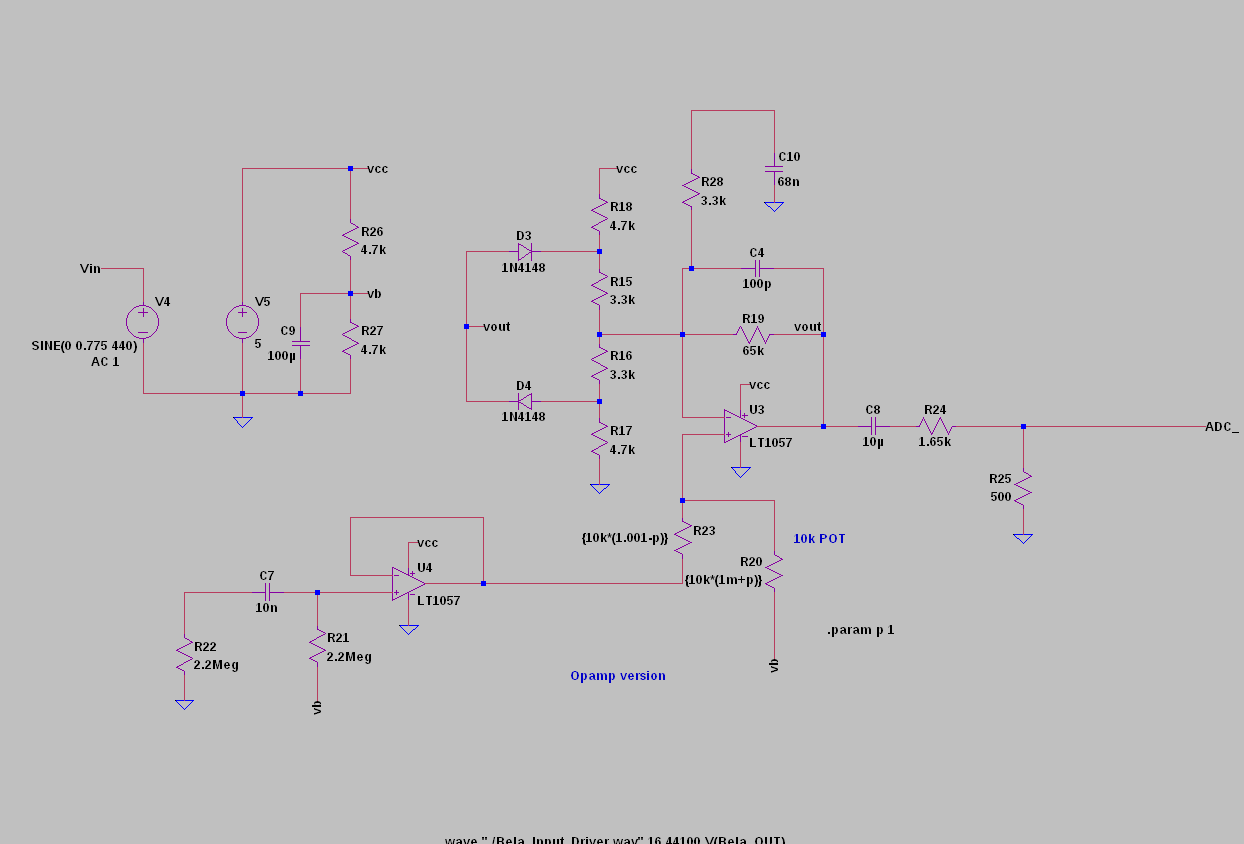First of all, what you are doing for the preamp will work lest it sounds like I'm saying otherwise. If it sounds good to your ears, go with it. The rest of this gives you more ideas if you get dissatisfied with the result.
William @ryjobil About the diodes. I wanted to add the gain control to fully use the 16bit. Otherwise a dry signal from a single coil guitar probably wouldn't use much of the 16bit.
I fully understand and agree with the intent. The salient characteristics of the strategy I expressed uses harder clipping to reduce the range over which the nonlinear function is operating. The point is to create a wider region of operation where the clipping mechanism has almost zero effect until the output signal gets more near to the rails. That way clean is pristine, but occasional clipping isn't ugly.
The way you have it implemented the circuit will be distorting even when you want it clean if you're using the full 16-bit resolution. I did some simulations on your circuit where the clipper was a Schottky diode in series with an Si diode, for 1.7Vpk-pk clipping. At 0.8Vpp there is about 1% distortion. Full range (1.8Vpp) the distortion increases to about 20%. Basically you would have 15 bits of clean dynamic range and you lose the MSB to increasing diode nonlinearity.
A traditional back-back diode clipper is actively affecting the sound long before you get audible buzz. Maybe you always play with a little dirt and don't mind this. On the other hand, 15 bits is pretty good so maybe this will be ok if you use 2 series diodes.
Here are a couple ideas for how I am working around this problem. Maybe this will make it more clear what I'm saying and perhaps spark some ideas.
Discrete implementation using "diode compression op amp" (5V "Vcc" needs to be filtered with R and large C since this doesn't have much PSRR to speak of)

Op amp-based implementation. The key point is clean headroom before diodes can become forward-biased, and then output resistor divider brings the max clipped signal level down to within the ADC input range. You can put as much gain on the input side of things to make up for it.

The following simulation plots are from the discrete version, but the op amp version is designed for the same frequency response while the op amp clipping is symmetric:

And a transient sim to see the soft clipping as well as the amount of gain available on the first stage.
I noticed I made a mistake (notice 870mVpk-pk). Change R4 to 2.2k and R7 to 1.8k to get 1.9V peak-peak assuming Vcc = 5.0V. One could also use a 20k resistor parallel to 5k pot. Adjust the setting on the 5k pot to get full-range input when the circuit is slammed rail-rail. The value of 4k in that lower leg is important to the output symmetry (hint you can tweak clipping symmetry by changing this resistor value).

FWIW I'm using 12V supply and a 600 kHz switcher to get the 5V. This switcher I designed myself, but you can get SMPS DC-DC converters from DigiKey or other distributor of choice. Murata has a good number of these.
This might be a helpful tip if you have a hard time managing the heat from a 7805.





